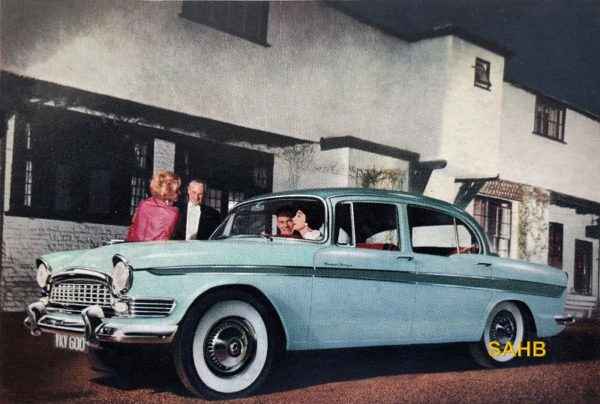
Why did Humber choose the name Snipe (and then Super Snipe) for its luxury cars? The reason has eluded us; Hawk, a name used for the more modest offerings from Humber under Rootes Group ownership, surely describes a more aggressive and exotic winged creature than does the name of a small, camouflaged wading bird.
The answer perhaps lies in the Snipe’s very long beak, ideal for creating the stylish, streamlined radiator mascot that can just be detected on the bonnet of the Super Snipe in our Snapshot.
The Snipe name was first used by Humber on a four-door luxury saloon introduced under the banner headline “Such Cars As Even Humber Never Built Before”. Rootes Limited had just been appointed as Humber’s “World Exporters”, and this headline was a testament to William Rootes’s marketing skills. In 1932 Humber joined what became known as the Rootes Group.
The Super Snipe was introduced in October 1938, derived by combining the four-litre inline six-cylinder engine from the larger Humber Pullman with the chassis and body of the three-litre Humber Snipe. The car now had excellent performance with a top speed of nearly 80mph, fast for its day. From then on Super Snipes became Rootes Group’s owner-driver big cars.
The Super Snipe continued in production during World War II as a British military staff car. From 1946 it was relaunched as the Mark I, and continued to grow in size and power through to the Mark IVB, last built in 1957. It is here that the Hawk model name was created, for the 4-cylinder version. Clearly Humber considered that a Super Snipe could out-wade a Hawk any day of the week.
In October 1958, a new Super Snipe and Hawk were introduced with a far more modern monocoque body; this time the designations were both Series I. The Hawk had a four-cylinder 2,267cc overhead-valve engine, the Super Snipe a new 2,651cc, six-cylinder overhead-valve engine based on an Armstrong Siddeley design. There was a three-speed manual transmission with optional Laycock de Normanville overdrive on second and top gears, or Borg Warner DG automatic transmission. Power steering was available as an option. There was even a touring limousine model with glass partition – the Pullman model that served the limousine market had stopped production in 1954.
And finally to the car in our Snapshot. The Series II was launched for the 1960 model year with its engine enlarged to 2,965 cc and with front disc brakes. A Series II with overdrive and power steering was tested by The Motor in 1960 and had a top speed of 94.7mph and could accelerate from 0-60mph in 16.5 seconds.
The Series II only lasted a year: it was replaced for 1961 by the twin-headlamp Series III, the first British car to fit two pairs of headlamps.
Photo courtesy of The Richard Roberts Archive: www.richardrobertsarchive.org.uk







Leave a Comment